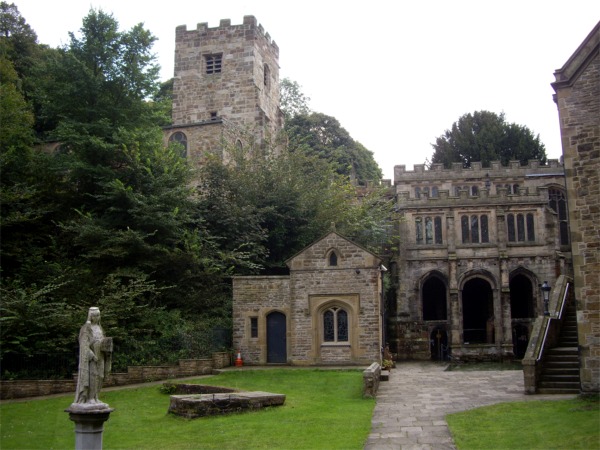Springs and Wells
April 2013 Filed in: Human Landscapes | Water

As the first season of the year, spring brings a fresh start to the country calendar, while also sharing its name – and a common origin – with the word for the source of a stream, an Old English verb that means ‘to burst forth’.
An enduring human preoccupation, the availability of fresh water is one of the most dominant factors in shaping not only the landscape itself, but our subsequent use of it. In the spring line settlements of the North and South Downs, villages cluster around streams that flow from the base of the permeable chalk. Chalk may be porous, but on the Downs it lies over an impermeable clay and springs bubble to the surface where the two rocks meet. You can trace this concealed seam with the aid of nothing more specialist than a motoring atlas; the hidden geology that makes the spring line is betrayed by roads that run from village to village, parallel to the crest of the Downs.
Spring line settlements aren’t only found on chalk. Cheddar and Wells, at the base of the Mendips in Somerset, are spring line villages at the foot of limestone outcrops, while the dead-straight fifty-mile-long escarpment of the Lincoln Edge reveals a spring line settlement every mile or so.
In Cheshire, a ridge of various kinds of sandstone that runs north from Whitchurch includes one that is aptly named ‘waterstone’ on which springs abound. With fresh water widely available at the ridge’s foot, the pattern of settlement is dispersed and open; higher up the slopes, wells were excavated in the easily worked rock – one, within the inner bailey of Beeston Castle is over 350 feet deep.
In medieval times, the source of water not only satisfied a physical requirement, but could also fulfil a spiritual need. At the centre of reverence for water as the capricious, spiteful god it sometimes seemed to be, wells were credited with magical qualities; in that way at least, a holy well like, well, Holywell in Flintshire lived up to its epithet as the ‘Lourdes of Wales’, attracting thousands of pilgrims to take the waters long before spa towns like Cheltenham and Tunbridge Wells claimed medicinal benefit in the foul-tasting waters. But even the medieval holy wells are young in comparison to the wells of the celtic fringe. On the approach to Madron and Sancreed Wells in Cornwall and St Curiden’s spring on the Black Isle near Munlochy, hundreds of votive rags, or ‘clooties’ have been tied to the trees by visitors seeking a cure to an intractable illness - as the fabric disintegrates, runs the reasoning, so the illness is cured. Unfortunately, some have left offerings that are made from non bio-degradable fabrics.
blog comments powered by Disqus
